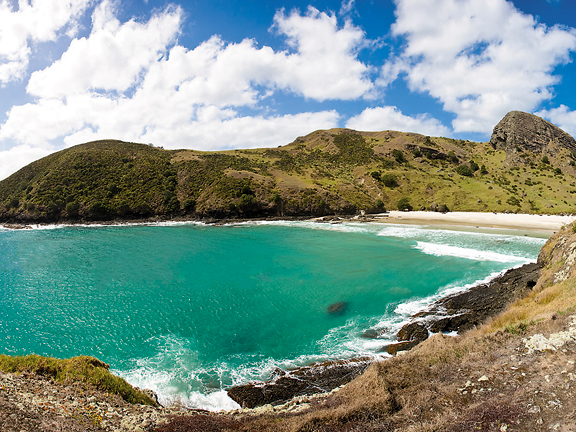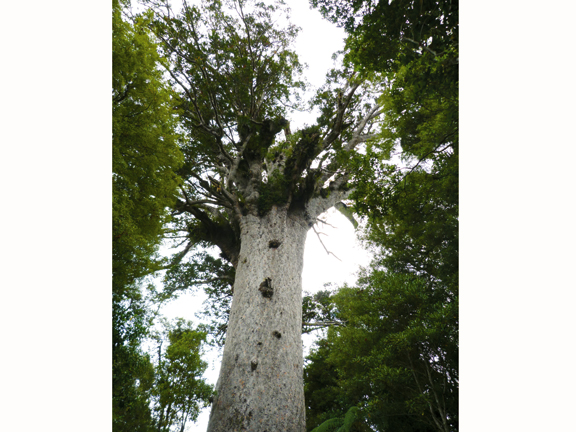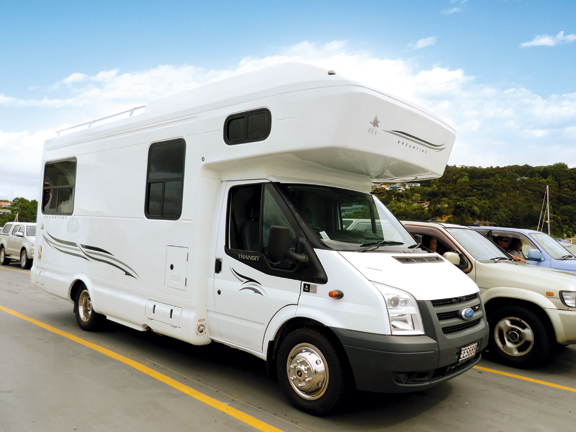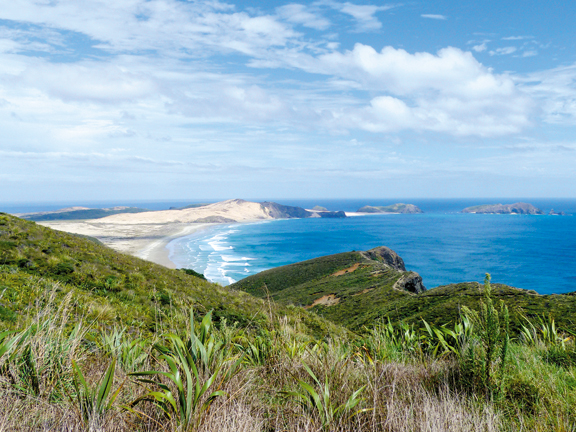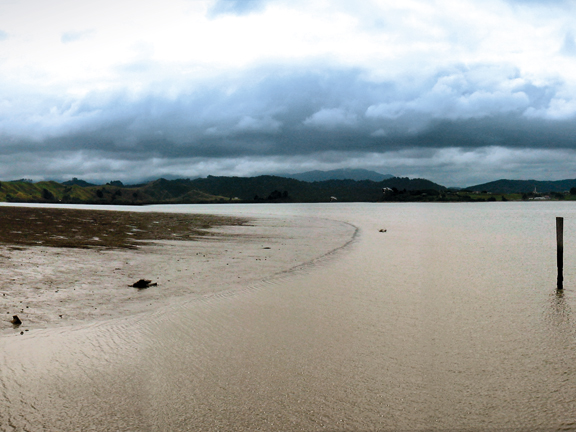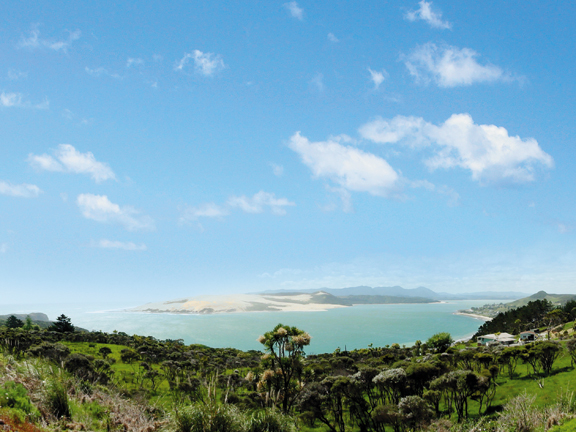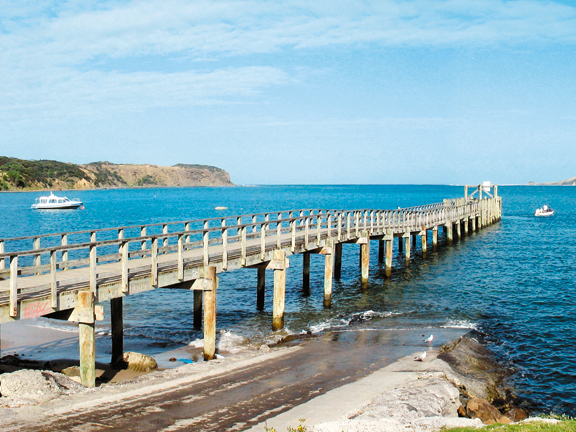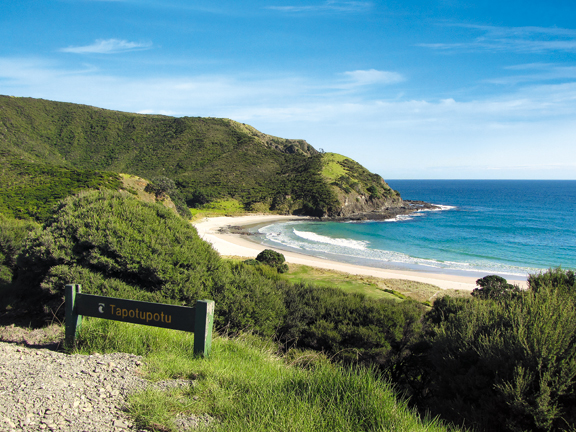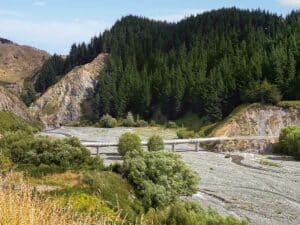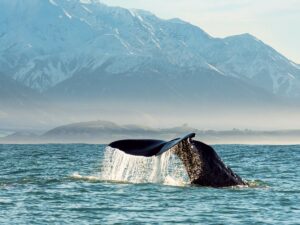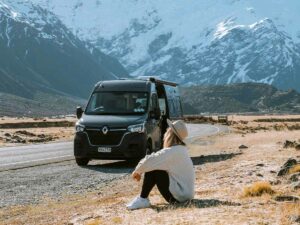The trip north was to be a bit of a lucky dip. We had no idea which vehicle would be waiting for us at the RV Supercentre in Albany to begin our four-day working holiday. As it happened, lady luck was definitely on our side when we were ushered towards a pre-loved 2007 Kea Dreamtime.
Bill Savidan tested one of these for us last year and had only positive comments about the near-new condition of vehicles coming out of Kea's Albany plant bound for the second-hand lot. These vehicles are refurbished to a high standard, and you get an awful lot of bang for your buck when you buy one.
What we got for the 'trip to the tip' was 6.8m of grunty Ford Transit with a 460 cab over, six-speed manual, turbo diesel with power steering and panoramic windows, absolutely ready to roll on (or off) the road.
We chose Cape Reinga for our destination as it has been on my bucket list for nearly 30 years, while the co-pilot had not been there since 1974. So we were a pair of nostalgic old crocs bent on reliving our glory days as we eased the Dreamtime on to the highway north.
It had been decided on day one to strike out for Rawene on the Hokianga Harbour, which has always been one of my favourite wee places. I have a soft spot for the entire Kaipara region as well, especially around Paparoa and Pahi. A twin-coast-discovery-type tour was placed on the agenda and quickly agreed upon. We also discovered a shared desire to pop in and pay our respects to Tane Mahuta, New Zealand's largest surviving kauri tree.
Day one was to be a whistle stop as we whizzed into Warkworth for an abortive attempt at stocking up. Warkworth is such a busy burg, even on a Thursday morning in the shoulder season. It was hard to find a supermarket car park large enough to accommodate 6.8 metres of motorhome, and after driving in and then out again, I tried for a riverside park. No luck there either, although the exercise was not altogether wasted as it offered the opportunity to practise reversing in a confined space. We came off unscathed and headed back onto the highway wondering how much of Warkworth's potential RV revenue is lost this way.
I always experience a thrill when catching my first glimpse of the Kaipara valley and eagerly anticipate the turn off at the foot of the Bryderwyns. This is Jane Mander country, brought vividly to life by the New Zealand writer in her novels, which include the classic The Story of a New Zealand River (1920), and Allen Adair - story of a cutter (1925).
Mander (1877-1949) was a suffragette, a journalist and newspaper editor who, upon her return from working in Australia and studying at Columbia University in the USA, wrote of the area she knew so well. Mander's focus was on the early European history and the gum trade. Through her detailed portraits of daily life, her books provide a fascinating glimpse into the moral, political and social climate of the day.
For a more instant introduction, The Kauri Museum at Matakohe, and its attractive surrounds, is not to be missed. On this occasion we decided instead to lunch at a picnic table just beyond the enormous root system and arching boughs of Pahi's gigantic Moreton Bay Fig - one the country's 10 most significant trees. It was a glorious day to sit beside the Kaipara and it was only our desire to make camp at a reasonable hour which drew us reluctantly away.
The next stop was in Dargaville to stock up on food and wine. This time there was a generous car park and we were spoiled for choice as we gave the vehicles of other shoppers a broad berth. I am fond of Dargaville, and one day would like to linger there for longer, doing day trips to Bayley's Beach or Kai Iwi Lakes and the many historic sites in and around this attractive river town.
It was late afternoon as we traversed the nearly 18 kilometres of winding road through the Waipoua Forest and disembarked to take the five-minute return stroll along the forest boardwalk to Tane Mahuta. I have often found a hushed reverence among those gathered beneath New Zealand's largest known living kauri. On this occasion the banter between families, friends and fellow travellers did not diminish the respect we all seemed to feel in the company of this forest giant, thought to have been on earth since around the time of the birth of Christ.
As we wound down the hills towards Opononi the golden light of early autumn provided a dramatic backlight to the spectacular sand hills of Omapere - a view which, under any circumstances, never fails to take my breath away. Nearing the shoreline we encountered a throng of waka ama paddlers preparing their craft, while others were already underway, racing along the inlet. It was momentarily possible to close my eyes and imagine the rich history of this harbour which retains special importance to Maori.
At Rawene, nothing (and everything) seemed the same. There were more for sale signs, and closed shops and restaurants signalled a downturn in the local economy since my last visit some seven years before. But the harbour retained its exquisite restful charm, and the quaint Rawene Holiday Park looked just as welcoming and spotlessly clean as we nestled happily into our berth near the bush line.
We had planned to dine out, although ended up settling (with no regrets) for takeaways from Hokianga Takeaways in Parnell Street, which we ate over the road on a picnic seat near the water. The co-pilot claimed his egg and bacon burger was one of the best ever and he was rapt he'd been asked how he liked his egg cooked. Meanwhile my fish and chips were fresh, crisp, hot and well - frankly perfect.
An unwelcome surprise was in store for us the next morning as we headed over the hill towards Kaikohe when a plump brush turkey committed hari kari, without warning, on the driver's side of the windscreen. We were momentarily shaken by the experience, although it was to prove no bad omen as the rest of the drive to the 'Cape' unfolded magnificently.
Contemporary Kaitaia was an unexpectedly delightful experience. Since my first of many subsequent visits there in 1985, I have always regarded this northernmost town as a portal. It is now a destination in itself and a great deal of this change in perception is due to the magnificent new community centre, Te Ahu.
From Kaitaia, where we re-fuelled and stocked up for any eventuality at the enormous Pak and Save on the northernmost edge of town, we struck out for Cape Reinga. I had been warned the road north from that point could be "a little boring", but found it not to be so. In fact, I was completely enamoured of the many glimpses of pure white sand-hills and the numerous thirsty estuaries begging for a more intimate acquaintance.
And what of Te Reinga Wairua (Cape Reinga) and Te Paki Reserve itself? A unique archaeological landscape combining vast wetlands, sand, sea and spirituality, as well as throwing in a picturesque lighthouse for good measure? I was in heaven, and lingered as long as possible before beginning part two of the journey - homewards via Russell, Karikari Peninsula and Tutukaka.
For the latest reviews, subscribe to our Motorhomes, Caravans & Destinations magazine here.
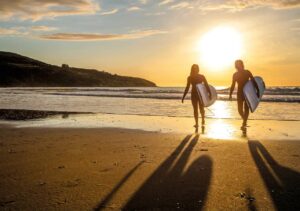
Raglan: winter beach life
Mel de Jongh discovers that Raglan is not just a summer destination and offers plenty to spark joy over the winter months

